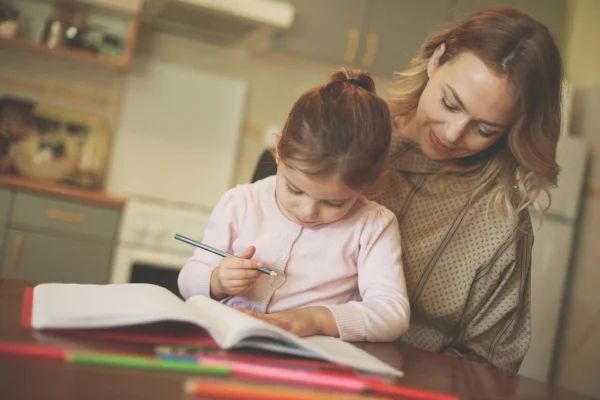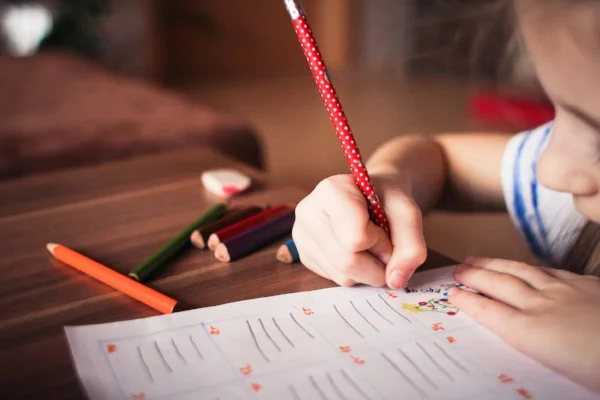By Amy Daire for Insider
When it comes to hiring someone to look after your children, there's no such thing as being too cautious. However, interviewing tons of nannies, babysitters, and agencies just to find one that's good enough takes a lot of time and effort.
As someone who has nannied and babysat for several unique families over the past five years, I've been to my fair share of interviews, with both parents and agencies. Some stuck with the simple questions — like "Do you know CPR?" and "How do you feel about overnights?" — but others asked me questions that really made me think about myself and what my role in the family would be.
These are the six best questions I've been asked in the past (and a few more that I wish had been):
"WHAT WAS YOUR FAVORITE MEMORY WITH YOUR LAST FAMILY/CHILD?"
This question is the perfect ice breaker and it will easily give you the cutest answers you've ever heard in an interview. It won't answer any of the tough, logistical questions you surely have, but it could give you a glimpse into how passionate this person is about their role. It's especially good to ask if you're looking for someone to become a part of the family.
"IF THERE WAS ONE SKILL/LESSON YOU COULD TEACH OUR KID, WHAT WOULD IT BE?"
This is a better, roundabout way of asking "What interests you?" or "What's important to you?" Whether they want to teach your kid(s) their native language, instill good manners in them, or introduce them to art or history, it will subtly give you more details about the person you're interviewing and, more importantly, it will reveal what might rub off on your offspring if this certain nanny is hired.
"HAVE YOU EVER WORKED WITH A FAMILY THAT USES A PARENTING STYLE YOU DON'T AGREE WITH? HOW DID YOU/WOULD YOU DEALT WITH IT?"
It's okay if they have. In fact, it might be better that way. Not only will they have experience with different approaches (maybe even great ones), they will also be able to tell you upfront if there are things they are not okay with.
Most nannies keep their opinions to themselves with small issues but when it comes to things like punishments, vaccinations, or restrictive diets, things can get tense if you're not on the same page.
"HOW WOULD YOU MAKE HOMEWORK, MEAL TIME, BATH TIME EXCITING OR EASIER FOR A CHILD WHO DOESN'T LIKE IT?"
Rather than asking "Can you cook?" or "Would you help with homework?" ask them how they would help. Similar to good parents, good nannies will be on top of the latest tips and tricks to ease any troublesome moments. If they tell you techniques they've used in the past, you'll get an insight into their past work and you'll also get a glimpse of their problem solving skills.
"HOW DO YOU LIKE TO BALANCE WORK AND LIFE?"
This is especially important for people looking to hire live-in nannies, as any nanny who has ever lived-in would gladly tell you. It can be hard to establish boundaries when you're a shout away. Take the time in the interview to discuss both of your preferred methods of handling this.
Maybe strict, specific hours work for you. Or maybe you want them on call even when they're off. Find out how they usually make it work to see if that'll work for you, too.
"WHAT DOES BEING A NANNY MEAN TO YOU?"
This was one of the questions that really made me think because "nanny" could mean something very different to everyone.
If you're looking for someone to bond with your child, teach them life lessons, and help them grow, you might not want to hire someone who says that being a nanny means watching the children when the parents are out.
"ARE YOU COMFORTABLE WORKING WHILE I AM (OR THE OTHER PARENT IS) AROUND?"
I've been a nanny for parents that want me to take charge even when they're there and I've worked for some who preferred to have me in the background while they're around. Each family and nanny is different so deciding what you want beforehand and bringing it up during the interview will establish lines with both the nanny and eventually, even the child or children.
"WHAT LONG-TERM AND SHORT-TERM PLANS DO YOU HAVE?"
Sure, sometimes things come up, but if you hire a young, 20-something nanny knowing that they want to pursue a career outside of nannying at some point, you can't be mad when they decide to do just that. You can, however, address the fact that you want someone long-term and do your best to find someone that also wants to be there for the long haul. Asking about their life plans or career goals will help you avoid miscommunication.
It's also wise to keep an ear out for other problems that could arise. Did they mention that they're dating someone long distance? If so, there's potential for them to move. Does their family live across the country? They might want to travel often. Those shouldn't necessarily be deal breakers but when it comes down to one nanny or another, these details might help you make a final decision.
"HOW DO YOU REALLY FEEL ABOUT DOING [THIS MUCH] HOUSEWORK?"
There's a difference between being a nanny and being a maid. Maybe you expect the nanny to grocery shop, do the entire family's laundry, cook, and clean — which is fine! — but the person you're interviewing might not know that. Additionally, they might not want to do that.
Be clear and upfront about what will be expected of them and pay them accordingly so that there aren't any unforeseen issues that come up after they've already started. It's one thing to ask if they're okay with doing a few chores here and there, but if you need/want much more than loading the dishwasher, make sure it's talked about in the interview.








